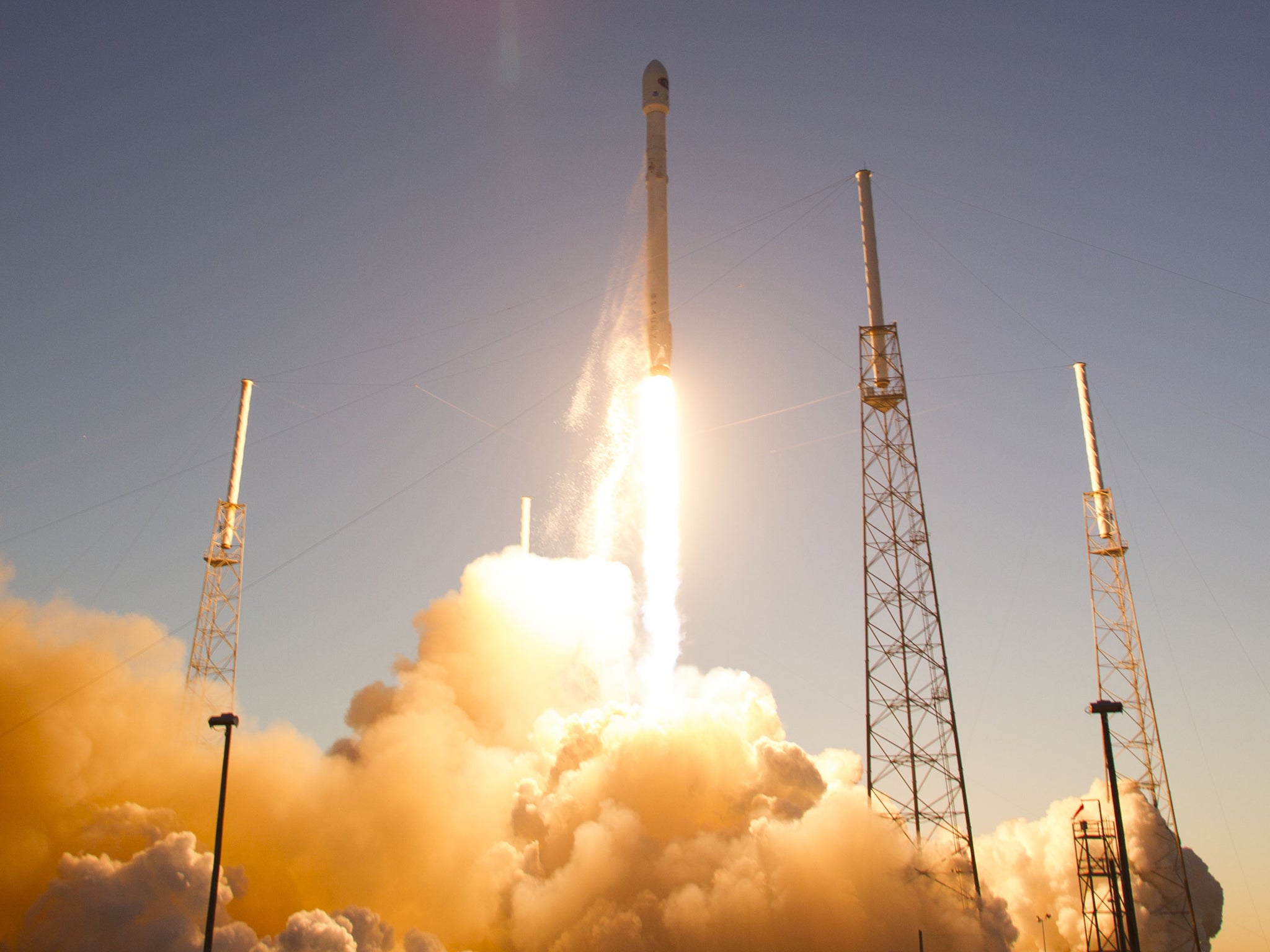SpaceX rocket: When will out-of-control Falcon 9 booster crash into the Moon and what happens when it does?
The rocket could potentially crash into the Moon next month

Your support helps us to tell the story
From reproductive rights to climate change to Big Tech, The Independent is on the ground when the story is developing. Whether it's investigating the financials of Elon Musk's pro-Trump PAC or producing our latest documentary, 'The A Word', which shines a light on the American women fighting for reproductive rights, we know how important it is to parse out the facts from the messaging.
At such a critical moment in US history, we need reporters on the ground. Your donation allows us to keep sending journalists to speak to both sides of the story.
The Independent is trusted by Americans across the entire political spectrum. And unlike many other quality news outlets, we choose not to lock Americans out of our reporting and analysis with paywalls. We believe quality journalism should be available to everyone, paid for by those who can afford it.
Your support makes all the difference.A SpaceX Falcon 9 rocket is about to crash into the Moon after spending nearly seven years on a chaotic course through space.
The booster was originally launched from Florida in February 2015 as part of a space weather satellite mission.
After the rocket’s second stage completed its burn to reach orbit, it did not have enough fuel to return to the Earth’s atmosphere – sending it into a bizarre orbit that is now on track to collide with the Moon as soon as next month.
Why has this happened?
SpaceX initially sent the Falcon 9 rocket into space to launch the National Oceanic and Atmospheric Administration’s Deep Space Climate Observatory, a satellite that monitors solar storms and other weather events.
Once that had been achieved – sending the observatory to its destination – the rocket stage was high enough that it could not return to the Earth but also lacked enough energy to escape the gravity between the Earth and the Moon.
When will the satellite crash?
Bill Gray, who writes the Project Pluto software to track near-Earth objects, predicts that the impact will come on 4 March – although not with complete confidence.
“I have a fairly complete mathematical model of what the earth, moon, sun, and planets are doing and how their gravity is affecting the object. I have a rough idea of how much sunlight is pushing outward on the object, gently pushing it away from the sun. This usually enables me to make predictions with a good bit of confidence”, he wrote.
“However, the actual effects of that sunlight are hard to predict perfectly. It doesn’t just push outward; some of it bounces ‘sideways’. The object is a long cylinder, spinning slowly; you can see the light from it vary as it tumbles, and you can plot a light curve for it indicating that it rotates about once every 180.7 seconds. (Or possibly every 90.4 seconds. There’s often some ambiguity in measuring rotation periods.)”
Mr Gray suggests that while the unpredictable effects are small, they could stack up between now and March. It is thought that the empty Falcon 9 booster will hit the Moon at a speed of 2.58 kilometres per second.
Has something like this happened before?
Many human crafts have collided with the Moon over time, such as the “hard lander missions of the early exploration years which imaged the Moon before crashing, accidental crashes when soft lander lunar missions have failed [and] orbital lunar satellites at the end of their mission lifetime”, Professor Katherine Joy of the University of Manchester told The Independent.
The LCROSS (Lunar CRater Observing and Sensing Satellite) mission, for example, was launched in 2009 for impact at the lunar pole with a number of sensors, cameras, radiometers, and spectrometers to “provide mission scientists with multiple complimentary views of the debris plume” created by the impact, Nasa records.
Unfortunately, it seems unlikely that the SpaceX craft will land at such an interesting point – nor will it have the same body of scientific instruments to gather as much data. Nevertheless, a crash is set to create seismic waves that will travel through the Moon and could give scientists some information about its internal structure, Professor Lionel Wilson of the University of Lancaster told The Independent.
“It will be useful because we know the mass of the parts of the rocket colliding [and] people will be able to work out quite easily what speed it is going when it hits the surface, then you look at the size of the crater – the depth and the width – which gives you just a little bit more information about the density of the surface”, Professor Wilson also said. “it’s still one more data point giving us some information about the strength of the lunar surface”.
What happens when it collides?
Satellites currently orbiting the Moon will be collecting observations about the crash if they are in the correct position. Both the Lunar Reconnaissance Orbiter and Chandrayaan-2 are in low orbits, but it is not yet known whether they will be in the correct position to optimally record the crash, Mr Gray wrote.
It is hoped, Professor Joy told The Independent, that scientists will be able to learn about the impact collision dynamics from the shape and size of the impact crater produced using the high-resolution camera on the LRO.
Mr Gray is less optimistic; “We probably won’t see the impact (it’s on the far side of the moon) and it’s not in a particularly interesting area”, he wrote. “Unfortunately, observations will be basically impossible until sometime around 7 February, while the object is at low elongations.”
The Independent has reached out to Nasa and SpaceX for more information.
Join our commenting forum
Join thought-provoking conversations, follow other Independent readers and see their replies
Comments